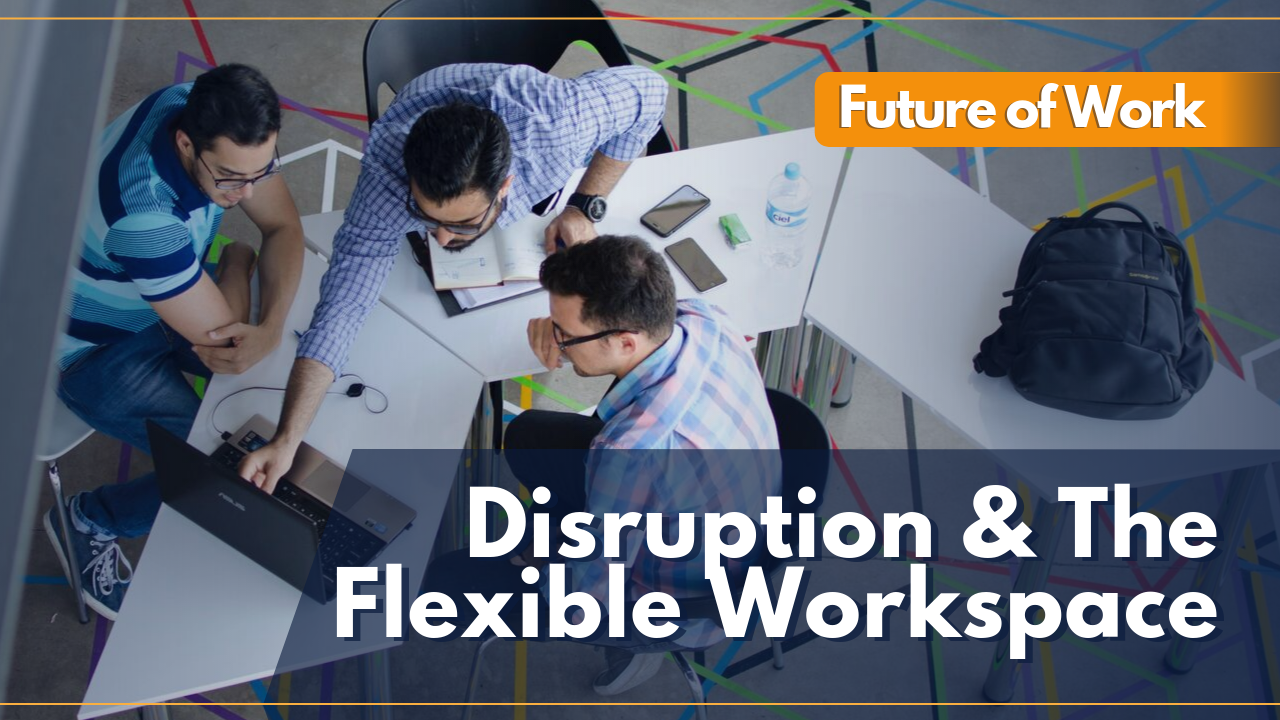- The flexible workspace industry is not a disruptive force.
- Changes in the market are enabled by embracing new technologies and business models.
- The flexible workspace market capitalises on disruption without taking any real risks.
Disruption is an odd term. It’s often seen as a badge of honour by many startups eager to break the status quo. But is this clamour for disruption rife in the flexible workspace industry?
Within this market, disruption is a hard phenomenon to pin down. Without disruption, we wouldn’t have any flexible workspaces in the first place; because the startups, flexible workers and even the new wave of corporates flooding the world’s shared workspaces are all disrupting the world of work in one way or another.
Flexible workspaces cannot exist without some form of disruption in other industries. It’s a chicken and egg situation.
The original idea of a ‘disruptive force’ comes from American academic Clayton M. Christensen to describe how a new entity can undermine a well-established organisation, not just taking its place in the market but, ultimately, revolutionising that entire market.
In the flexible workspace market, it all started with the sharing economy, which unleashed a raft of innovative business models, empowered by different disruptive technologies.
At the heart of this transformation is autonomy, which is essentially the power to shape your workspace to optimise your performance. Sometimes, that’s as simple as a set of software tools to help you manage your work, replacing those repetitive tasks without the need for human labour.
As a result, members now have greater control over their flexible spaces thanks to everything from user-centric design and dog-friendly spaces. But autonomy really stepped up a gear with the convergence of big data, artificial intelligence and the Internet of Things (IoT).
Thanks to the IoT, a wealth of smart devices can now connect to the internet and collect a deluge of information, otherwise known as big data. By integrating AI-enabled algorithms to conduct an insightful analysis of this data, we can capitalise on this data to do something, well, intelligent and further optimise our ways of working.
For example, up to 80% of customer service interactions could now be handled by a chatbot. What’s more, a recent report from consultancy firm PWC reveals that two-thirds of executives believe artificial intelligence will help humans and machines work together to be stronger using both artificial and human intelligence
AI and other such technologies continue to unleash further disruption on the world of work as our roles and responsibilities change. For example, further research reveals that, by 2030, 85% of current students in higher education will have jobs that haven’t been invented yet.
Other technologies, including virtual reality and augmented reality, are even threatening to replace physical workspaces altogether, allowing coworkers to connect from a virtual workspace. However, these technologies have been slow to get off the ground.
Future Forces
What will the world of work look like in 10, 20 or 50 years time? From robot angels to wiring your brain to a machine, it’s pretty much impossible to predict – but that doesn’t stop some people giving it a go.
Most experts can agree on this: technology will continue to play an increasingly dominant role to revolutionise our business models and ways of working.
The integration of tech to build autonomy in the workplace is something that WeWork has already capitalised on. This ethos is arguably responsible for the company’s explosive growth in the market and has helped the company raise awareness of the wider flexible workspace industry.
Yet, while WeWork is often applauded as a top disruptive force, it is more like a sheep in unicorn’s clothing and its floundering IPO announcement certainly hasn’t helped the company’s reputation as an innovator.
Continued evolution
Are there any disruptors in the flexible workspace industry? Well, there have certainly been many movers and shakers over the years. But the industry is based on the sharing economy. If one major player disrupts and takes over the market, could it survive?
Probably not, because we’d strip the flexible workspace industry of the firm foundations it has grown from for the last 50+ years. There are signs the industry isn’t looking for a sole saviour either. Instead, flexible workspace operators are developing a hybrid model, offering both private offices and coworking spaces.
A recent report from JLL states: “While there is still space for a traditional serviced office model, the rapid expansion of this model means that it already accounts for nearly half of all flex space, and changing customer demands suggests that it will continue to dominate the growth of the market over the next few years.”
In short, there’s room for everyone. There isn’t one core, disruptive force in the flexible workspace industry. All disruptions are welcomed into the fold to enable increasingly intuitive ways of work.
And that’s the secret to the flexible workspace industry’s success. It doesn’t try to disrupt the world of work because it doesn’t need to. It lets other players take the risks associated with disruption and changes with the times.
As such, the flexible workspace industry is a continually evolving beast that welcomes a wealth of incremental changes. It’s not one susceptible to disruption – it capitalises on it.


 Dr. Gleb Tsipursky – The Office Whisperer
Dr. Gleb Tsipursky – The Office Whisperer Nirit Cohen – WorkFutures
Nirit Cohen – WorkFutures Angela Howard – Culture Expert
Angela Howard – Culture Expert Drew Jones – Design & Innovation
Drew Jones – Design & Innovation Jonathan Price – CRE & Flex Expert
Jonathan Price – CRE & Flex Expert













